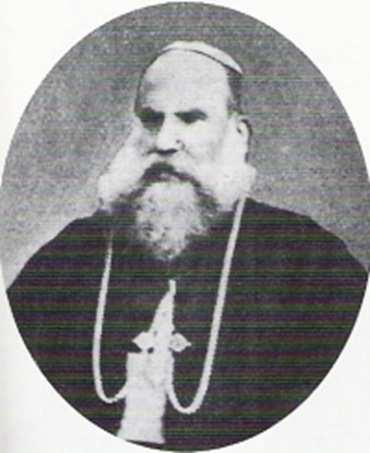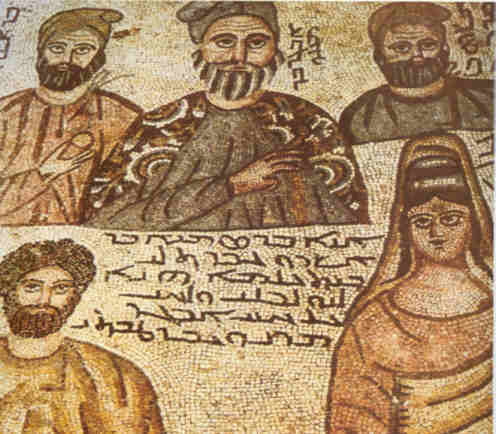|
1.
Page. 94 of the book
In Tur
Abdin in August 1888, “a Kurdisch chieftain from jebel Tur (= Tur
Abdin), Hajo Sarukhan, attacked a number of
jacobite villages, several people were
massacred and many houses were burned” (page 94)
2. Page. 95 of the
book
At the eve of
the year 1895, the Syrian Orthodox Church
numbered thirteen dioceses. Immediately after the First
World War, it would have only five,
plus a new one, Lebanon. (Page 95)
3. Page. 100 of the
book
[……]
the Muslims’ hostility towards Christians seems to have doubled, and
they show it, I have heard, without any sense of moderation. Thus,
recently, in one of the main Mosques in Harput, a Mullah, quite insane
as he has been described to me, preached holy war and called upon all
Turks to prepare
to exterminate the Christians
(Page 100, Report #1 January 25, 1895)
4.
Page. 106 of the book
Paul Cambon,
the drafter of the Franco- British entente of 1914, later Ambassador in
Istanbul wrote on 4-11-1895 a letter to his mother about the massacres
in Diyarbekir,, Asia
Minor is literally in flames….. They are massacring all the Christians
without distinction” (Page 106)
5.
Page. 120 of the book
...But
very close to Jzireh, in the Jacobite (= Syrian Orthodox) villages of
Jebel Tur (= Tur Abdin), the Kurds
plundered and massacred to their heart’s content
(Page 120)
6.
Page. 120 of the book- Roman Catholic father Galland about the situation
in Tur Abdin which he encountered in 1896:
I would not know how to express
to you the pangs of sadness that gripped
us when we saw, in the Christian villages we crossed,
the still recent signs of looting and arson,
the homes without roofs or doors, al wide open and emptied of their
inhabitants, the profaned churches in the
same state, the harvests abandoned in the fields for lack
of hands and beasts of burden. Large towns
almost deserted, where only a few groups of women and
children wander through the ruins, since the men for the
most part died under Kurdish knives and bullets
[...] In the smallest villages, the victims number in the hundreds, and
it should be noted that everywhere, the first
to he attacked were the priests, then the schoolteachers and the main
landowners or other influential figures. [...] The Kurds
still come at any time rob the Christian villagers of the few flocks
they managed to save (Page 120/121, November 1, 1896, a letter reporting
on Father Galland’s trip from “Jezireh to Siirt via Jebel Tur”) |
1.
The village Sa‘diye (Page. 40 of the book)
It is situated 10 km
eastern of Amid; there were Syrians and Armenians living; in total
approximately 300 people. On the first Friday of November 1895,
the Kurds entered the village and started to
kill the men and boys. They took women's and girls in
prison, and plundered their houses. The Christians escaped to the church
and took refuge and barricaded the door. But the Kurds made
a hole in the roof and poured naphtha and hay
above them and set it in fire. To be able to escape, the
refuges had to open the closed gate;
however the Kurds were ready in front of the entrance to stab everybody
who came to the outside. Nobody escaped, only three men,
who escaped to Amid and told about the catastrophe.
2. The city
Mipharqat (Maiperqat; Page. 43 of the book)
…. The Kurds entered the
city and started to kill the inhabitants,
robbing their properties and rapping the young
women. Because there were no roads to escape or places to
hide, they went to the church. The Kurds went to
the roof and made a hole and poured naphtha
above them and set it on fire.
Of the horrible acts, we
have to mention this one: they attacked a house and encountered there a
nice woman; when they started to
dishonour the woman and ridicule here chastity before the eyes of her
man; the later took a stick and attacked them. However,
they tied him, cut his hands and foots
and after that they killed him. The hands and foots of
the woman were cut off as well without killing here. The women had
a baby which she could not breast-feed the
child anymore. A good man saw this happening and brought
here to Amid. She carried here child by her teeth. She didn’t live long
and died.
3. Sewerak (Page. 44 of the book)
The despot
Hadgi Osman Pascha and his brother acted very nasty.
They invited the Kurds of their
vicinity and set them against the Christians;
the Kurds attacked the Christians with
swords and sticks and knocked them very hard. Only four families could
escape. The number of martyrs was about four thousand. The other
villages in the vicinity of Amid underwent the same fate:
In the east: ‘Ainschah,
Telkhas, Giranekh, Satya, Safna, Sa‘diye and Quzan.
In the west: ‘Alibar,
Qartah, Qarakilisa (= the black Church) and Qanqart.
In the north:
Qadhi and Batrakiye.
In the south:
Ka‘kiye, Garukhiye, Khan Aqfanar, Arzaoghli and
Hulan.
The same happened to the
following villages:
Bschariye,
Ligeh, Gharzan, Frotbrat, Adjaman, Hesenmansur and others.
Although the inhabitants of
Mardin have been suffering much distress; no massacres took place in
their city. This in contrast to the villages around Mardin such as in
Qusur, Banabil, Hesno d-Atto (Qal‘et Mara), Mansuriye and other
villages.
Those who
escaped the massacres took refuges in the Monastery
Za‘faran.
|

